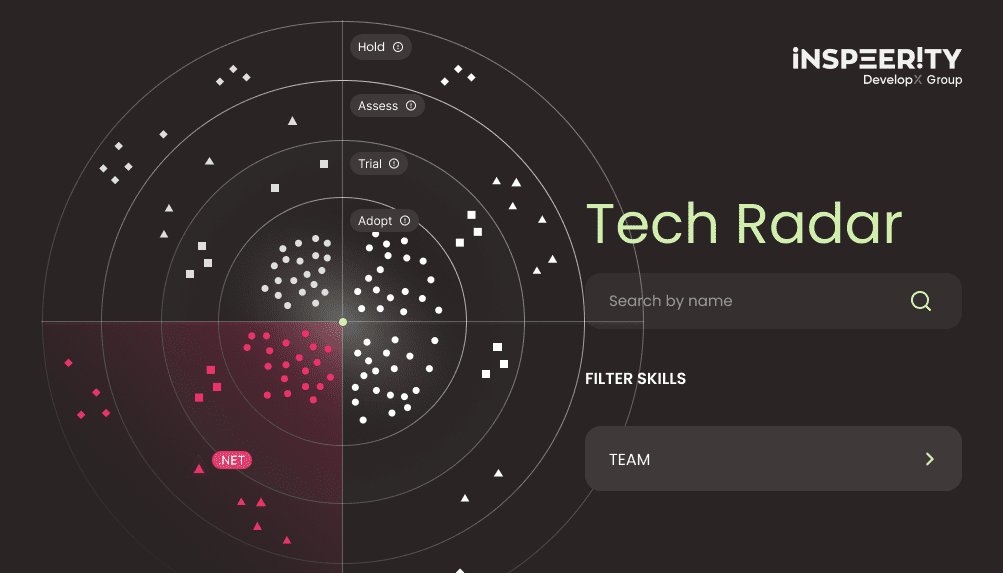Do you know what it takes to choose the right framework for your project? Even if your answer is no, by the end of this article you will learn how to make the right decision.
Table of contents
- How to choose between SCRUM and Kanban when you’re not an expert in any of them?
- When to choose SCRUM for your project?
- When to choose Kanban for your project?
- Why not use both?
- What if I tell you, you don’t need to decide at all?
How to choose between SCRUM and Kanban when you’re not an expert in any of them?
SCRUM is very popular. It’s probably the most popular Agile framework, especially in IT. However, many companies wonder if it is the best one and if they could find a different solution. That’s when they encounter Kanban. It originated in car manufacturing and is so matured, that many people use some of its elements not even knowing where they come from.
You can learn about the essentials of both these frameworks and their backgrounds from our previous article: Kanban vs Scrum: What are the Differences?
Before you choose any framework or method of running a project, you should evaluate the nature of your assignment, your organization, and the team.
- Does your project’s business cycle naturally fit any of the pre-selected frameworks or it’s very close to it?
- Does your team have experience in any of these frameworks?
- Do you rather want to adjust your organizational structure to the framework or the other way round?
- Do you need precisely described roles and procedures?
- How strongly you want to engage in the process of product development?
- How big is the project?
- Are you going to run similar projects in the future?
Although discussed frameworks differ in many ways, let us consider the similarities. Both SCRUM and Kanban aim at delivering the product in the most efficient way while constantly upgrading the development process. Both of them also embrace the challenges of an ever-changing business environment.
When to choose SCRUM for your project?
Here, everything is described in detail. Actually, it is your company that should adjust to SCRUM, not the other way round. In return, you get a well-defined framework that structures your workflow.
There are three key elements of SCRUM:
- Roles
- Events
- Artefacts
You don’t need to think that much about who will take care of the workflow or the customer needs. It’s all described. The workflow itself is guided by the Events (planning, sprint, etc.) and to help everyone find themselves within the process you will use the artifacts.
SCRUM was created with software development in mind from the very beginning. One of the main advantages is that when you deliver regularly and get regular feedback, the result fulfils the exact customer’s needs that may change along the whole software development lifecycle. The self-organizing development team works together to deliver exactly what had been planned for a particular Sprint. They choose only these Stories that can be finished in the assumed time-frame (usually 2-4 weeks).
Regular releases make it easy for the customer and other stakeholders to control the progress and suggest new solutions. Moreover, it makes it clearer, what actually has been done and delivered, what value has been produced. It also helps to plan the future road-map and exact dates of new features delivery. The clear picture shared among all stakeholders gives the kind of transparency absent in other methodologies. Simply, it helps get everyone on the same page. It’s very useful when you need regular updates of your product.
When you decide to employ SCRUM in your project, you benefit from clear instructions and guidelines. However, you will also need experienced SCRUM professionals to make it efficient. It’s best when not only SCRUM Master and Product Owner know the ropes of the framework, but the development team as well. For many companies, it means paying for SCRUM training and hiring or contracting an experienced professional to lead the whole process.
When to choose Kanban for your project?
Compared to SCRUM, Kanban gives you more freedom regarding the roles and workflow. As a result, it’s easy to learn, understand, and apply. You can virtually start using it tomorrow morning and later improve your process on the way. Kanban is great for constant improvement. It smoothens the transformation of the way you do things in your company.
The core idea in Kanban is the visual representation of the workflow that helps you identify pitfalls and bottlenecks to improve the process of software development. Furthermore, thanks to the visual component, it’s easier to track performance and understand what happens in the project. The essential Kanban elements are:
- Kanban board
- Kanban cards
- Kanban Metrics
While Kanban doesn’t tell you how exactly to do things, you can employ it and adjust to the way your organization works now. And as it originated in car manufacturing, you can try to apply some of the features even to Waterfall projects.
Pure Kanban says nothing about regular Sprints or releases. You can, of course, schedule the release of a new version every couple of weeks, but Kanban is great for CI/CD practices. Therefore, you can also plan on-demand releases and deploy only when a bigger chunk of solutions is ready. Furthermore, in Kanban as soon as you finish one task, you pull in another one and start working on it. There’s no need to wait for the next Sprint. You just move on to another job according to the importance hierarchy. The only limitation is Work in Progress (WIP) – the number of tasks the team can work on at the same time. As you see, Kanban is incredibly flexible.
Yet another difference between Kanban and SCRUM is that the first doesn’t imply what type of team should work on a project. In fact, it is possible to work in Kanban without the Team at all. As the tasks and different steps are clearly separated and independent, they can be handled by just a group of people pulling them from the backlog. They can be from different teams, departments, or even companies and their location doesn’t matter.
Why not use both?
Because we’re talking about Agility in software development, we should mention flexible ways of adapting SCRUM and Kanban. Such a mixture is often called Scrumban and brings lots of profits. Especially that some features of Kanban can be easily incorporated in virtually any framework. That’s why Project Management practitioners often employ some form of Scrumban.
Limiting the work in progress during Sprint, as it is in Kanban, may be helpful for teams that have little experience with SCRUM. Visualizing the workflow within a Sprint is a great support for the development team and stakeholders. Moreover, the easier identification of bottlenecks enhances the overall performance.
What I want to say is that you can choose the best, most suitable solutions from different Agile approaches and use them in your favour.
What if I tell you, you don’t need to decide at all?
All these issues are very important if you choose to create a product within your company. However, you can always count on subcontractors, who spent many years working in Agile manner and improving their software development process. Software factories like Inspeerity have skilled professionals on board and based on their wide experience can help you go through this process, so it will be smooth and stress-free.
Having questions? Get advice from our experts.




